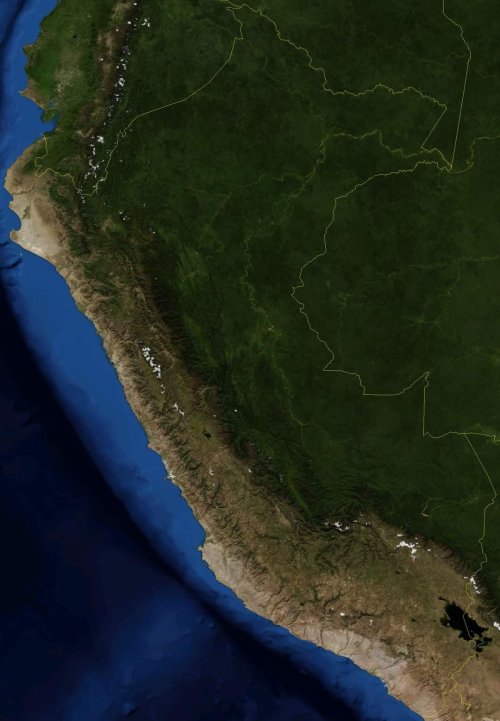
𝟮𝟭 𝗳𝗮𝗰𝘁𝘀 𝘆𝗼𝘂 𝗱𝗶𝗱𝗻'𝘁 𝗸𝗻𝗼𝘄 𝗮𝗯𝗼𝘂𝘁 𝗣𝗲𝗿𝘂:
1. Machu Picchu was built without the use of mortar, a technique known as ashlar. The stones are so precisely cut that even a blade cannot be inserted between them, showcasing the Incas' advanced engineering skills.
2. The Amazon River, the world's largest by volume, has some of its sources in the Peruvian Andes.
3. The Nazca Lines, a series of large ancient geoglyphs in the Nazca Desert, are still a mystery to researchers. They were designated as a UNESCO World Heritage Site in 1994.
4. Peru is the birthplace of the potato, with over 3,000 different varieties. Potatoes were first domesticated in Peru around 8,000 to 5,000 B.C.
5. Cusco, once the capital of the Inca Empire, is now known for its archaeological remains and Spanish colonial architecture.
6. Lake Titicaca, the largest lake in South America and the highest navigable body of water in the world, lies on the border between Peru and Bolivia.
7. The Peruvian Amazon covers 60% of the country, making it one of the most biodiverse areas in the world.
8. Pisco, a type of brandy, is Peru’s national drink and the key ingredient in the famous Pisco Sour cocktail.
9. Peru has three official languages: Spanish, Quechua, and Aymara. Quechua was the language of the Inca Empire.
10. The Andean condor, one of the world’s largest birds able to fly, is a national symbol of Peru.
11. The city of Caral, north of Lima, is considered the oldest civilization in the Americas, with structures dating back to 2600 B.C.
12. The Inca Empire was the largest empire in pre-Columbian America, and its administrative, political, and military center was located in Cusco.
13. Peru's culinary scene is renowned globally, with traditional dishes such as ceviche (raw fish cured in citrus juices) and lomo saltado (stir-fry beef).
14. The Inti Raymi, or Festival of the Sun, is an ancient Inca ceremony in honor of the god Inti (Sun), celebrated in Cusco on June 24th each year.
15. The Maras salt pans, used since Inca times, are terraced pools where salt is harvested by evaporating salty water from a subterranean stream.
16. The Amazon Rainforest's biodiversity is immense, with Peru being home to one of the largest numbers of bird species in the world and hundreds of mammals, reptiles, and freshwater fish.
17. Peru's Huascarán National Park is a UNESCO World Heritage site and home to Huascarán, Peru’s highest mountain at 6,768 meters (22,205 feet) above sea level.
18. The Chan Chan archaeological site in northern Peru is the largest pre-Columbian city in the Americas and was the capital of the Chimu Kingdom.
19. Túcume, in northern Peru, features an extensive complex of adobe pyramids, reflecting the Lambayeque (or Sicán) culture.
20. Peruvian literature has a long and rich history, with Nobel laureate Mario Vargas Llosa being one of the country's most famous authors.
21. The Uros people live on floating islands they have made from reeds in Lake Titicaca. The islands and homes are constructed from the totora reed that grows in the lake.
